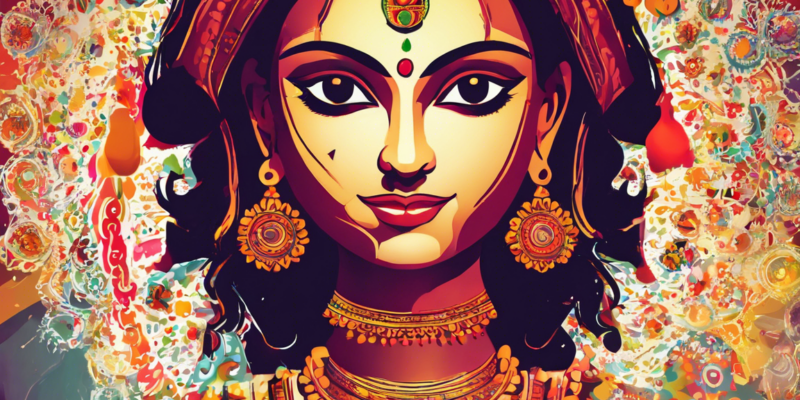Navratri is a vibrant and exhilarating festival celebrated with great pomp and fervor by Hindus across India and around the world. The festival spans over nine nights and ten days and is dedicated to the worship of Goddess Durga and her various incarnations. Navratri is observed four times a year, with the Chaitra Navratri and Sharad Navratri being the most significant. The Sharad Navratri, which falls in the month of October, is the most popular and widely celebrated.
Significance of Navratri:
Navratri symbolizes the triumph of good over evil and is a time for devotees to seek the blessings of the divine feminine energy. The festival also marks the change of seasons and is a period of rejuvenation and spiritual growth.
Navratri Dates for 2023:
In 2023, Navratri will begin on Sunday, 1st October, and conclude on Monday, 9th October. The festival culminates with Dussehra or Vijayadashami, which signifies the victory of Lord Rama over the demon king Ravana.
Rituals and Traditions:
1. Garba and Dandiya Raas:
One of the most popular and joyous aspects of Navratri is the traditional folk dances of Garba and Dandiya Raas. These dances are performed in circles with intricate footwork and rhythmic movements to the beats of traditional music.
2. Fasting:
Many devotees observe fasts during Navratri, abstaining from certain foods like grains, onion, and garlic. Fasting is believed to purify the body and mind and is a way to show devotion to the goddess.
3. Golu:
In South India, Navratri is celebrated as Golu or Bommai Kolu, where dolls and figurines are displayed on steps in households. The arrangement includes deities, saints, and other figurines, depicting different scenes from Hindu mythology.
4. Kanya Pujan:
On the ninth day of Navratri, young girls are worshipped and fed as part of a ritual called Kanya Pujan. This ritual symbolizes the presence of the goddess herself in the form of young girls.
Navratri Colors:
Each day of Navratri is associated with a specific color, and devotees wear clothes of that color to pay homage to the goddess. The colors for each day are as follows:
– Day 1 (1st October): Grey
– Day 2 (2nd October): Yellow
– Day 3 (3rd October): Green
– Day 4 (4th October): Grey
– Day 5 (5th October): Orange
– Day 6 (6th October): White
– Day 7 (7th October): Red
– Day 8 (8th October): Sky Blue
– Day 9 (9th October): Pink/Purple
Navratri Prasad:
During Navratri, special food items are prepared and offered to the goddess as Prasad. Some common Navratri Prasad items include Kuttu Ki Puri, Sabudana Khichdi, Singhare Atte Ka Halwa, and Aloo Sabzi.
FAQ Section:
Q1: Can anyone participate in Garba and Dandiya Raas?
A: Yes, Garba and Dandiya Raas are community dances, and anyone is welcome to join in the celebrations.
Q2: What is the significance of fasting during Navratri?
A: Fasting is believed to cleanse the body and mind and is a way to show devotion to the goddess.
Q3: How is Navratri celebrated in South India?
A: In South India, Navratri is celebrated as Golu or Bommai Kolu, where dolls and figurines are displayed on steps in households.
Q4: Why is each day of Navratri associated with a specific color?
A: Each color represents a different form of the goddess and wearing that color is said to invoke her blessings.
Q5: What are some common Navratri Prasad items?
A: Kuttu Ki Puri, Sabudana Khichdi, Singhare Atte Ka Halwa, and Aloo Sabzi are some common Navratri Prasad items.
Navratri is a time of spiritual reflection, devotion, and community celebration. It is a time to immerse oneself in the divine energy of the goddess and seek her blessings for prosperity and well-being. Whether you participate in the colorful dances, observe a fast, or simply meditate on the goddess, Navratri offers something for everyone to connect with the divine feminine energy.

